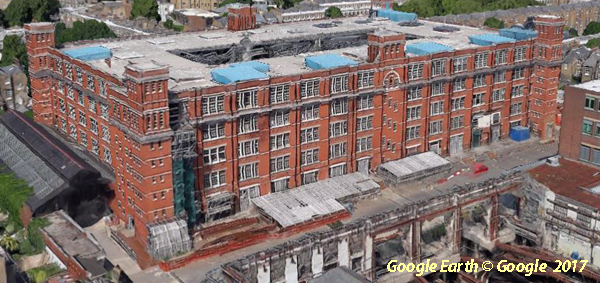 |
Studd Street: GPO Stores Dept. HQ. |
In the GPO, an amalgamation of the postal and telegraph stores departments, took place in 1902. At this same time an independent Factories Department (Fac D) was formed. Studd Street dates back to about 1906 when a typical stores vehicle was an Alldays and Onion 30 cwt utility, and Candlestick telephones were the norm.
John Tythe writes...
"The building, now known as 8 Esther Anne Place, was an engineering building, which housed the Engineer-in-Chiefs Office; London Test Section and London Materials Section, and the main GPO Stores prior to its move to the Crayford depot, and also the GPO Factories division until that part and those based in Bovay Place, Holloway, transferred to Bilton Way, Enfield."
"I owe my very existence to the Studd Street building. My dad, who worked in the GPO Stores, met my mum, who worked in the GPO factory on the third floor. They got married in 1949 and I came along in 1950. So without that building I would most likely not be here. I feel an affinity for it, and it often features in my dreams. Should I ever win the lottery, I’ll buy one of those apartments. Many families relied on Studd Street for their livelihood. Apart from my mum, dad and myself, my brother was also in the factory plus two aunts, an uncle and a cousin. Towards the end, my step dad was also there. Just in the LTS, there were fathers, mothers, sons, daughter, brothers, husbands & wives. It was a good place to be!"
Studd Street...
 |
Studd Street in Islington was originally the HQ of the GPO stores department. |
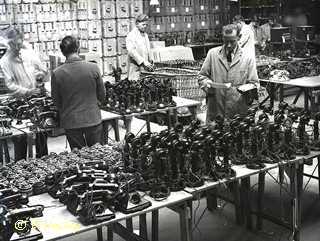 |
Telephone stock section at Studd Street. |
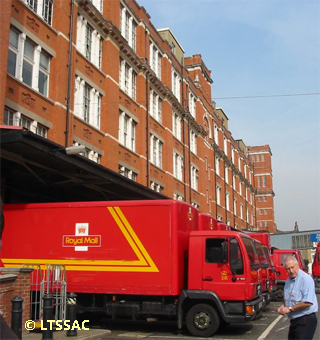 |
The main yard at Studd Street, then used as a Royal Mail depot. |
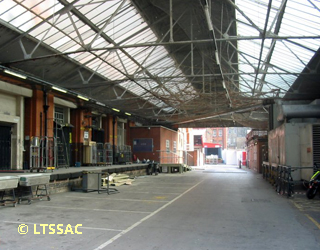 |
The loading bay at Studd Street, then used as a Royal Mail depot. |
On the third floor (factory) of Studd Street teleprinters were refurbished.
John Tythe writes...
The teleprinters were stripped down to component parts, which were washed with paraffin, in a wire caged room (to aid ventilation of the area) adjacent to ‘C’ staircase. There was significant spillage of paraffin in this area, which soaked into the parquet wood and the concrete floor beneath them. Even years after the Factories Dept moved out, there was still the odour of paraffin in the air. Before the building was closed down for the sell-off, for what is soon to become Islington Square, the Royal Mail moved their Customer Services Centre onto the third floor, occupying what was the northern half of the floor, where we had the Training Group, Metrology, the Glove Test Room and the Workshop in the 1970s. It also occupied the Teleprinter Wash Area. All nicely open plan, with purpley pink carpet and purple casing around all the pillars and all the windows boarded over and with ‘up’ lighting, it all looked very nice. I had to return there for an investigation into an industrial injury and whilst chatting to the CSC manager, he asked if I knew what the ‘smell’ was, as a number of the centres operators complained about the smell and that it made them suffer headaches and feel ill. All was revealed and he asked if I knew how it could be got rid of. I said to take up the floor and remove the concrete. His head was swimming at the thought! I wonder if those nice new £1,000,000 apartments will have that strange paraffin odour?
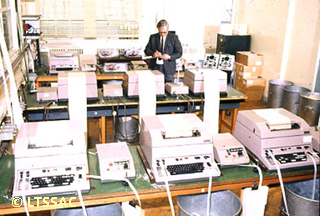 |
Teleprinter testing. |
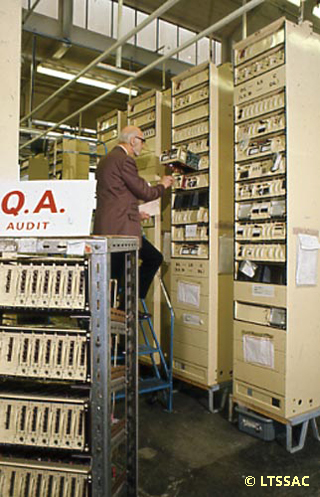 |
The QA department included many specialisms, whilst the definitions of quality went through many iterations during the decades of testing and calibration work which was undertaken at Studd Street. |
London Test Section (LTSSAC)
Page last updated 18th March 2017. Checked May 2021.
All logos and trade marks are the property of their respective owners and are used on the Light Straw site(s) for review only. Students and researchers are recommended to make their own independent enquiries as to the accuracy of the information contained therein.